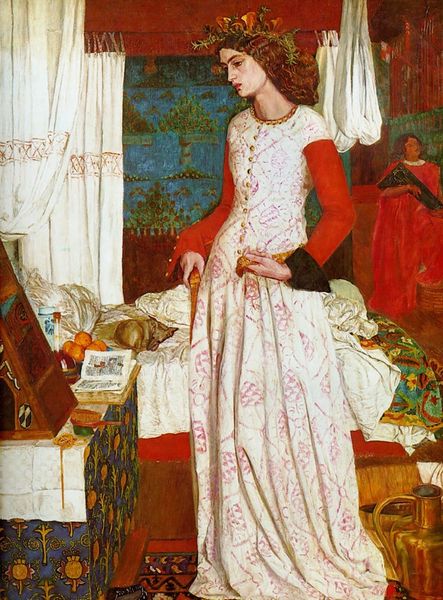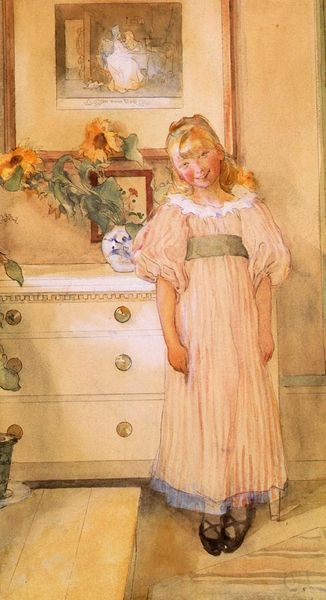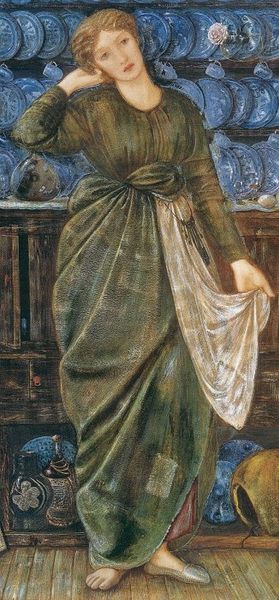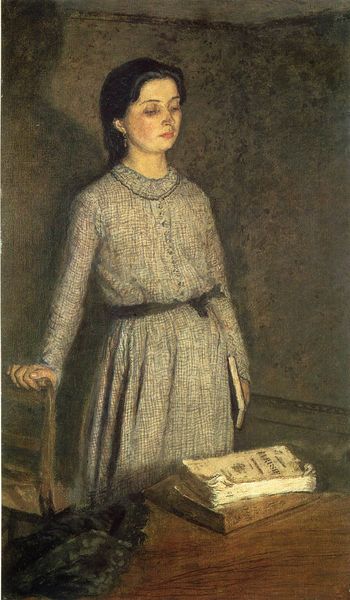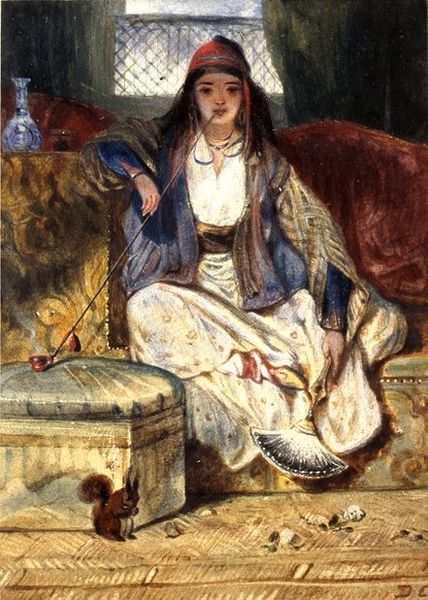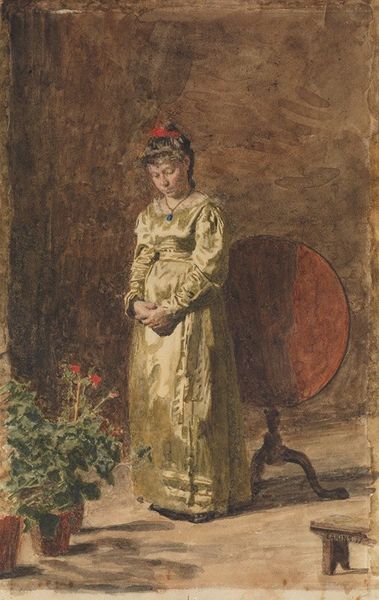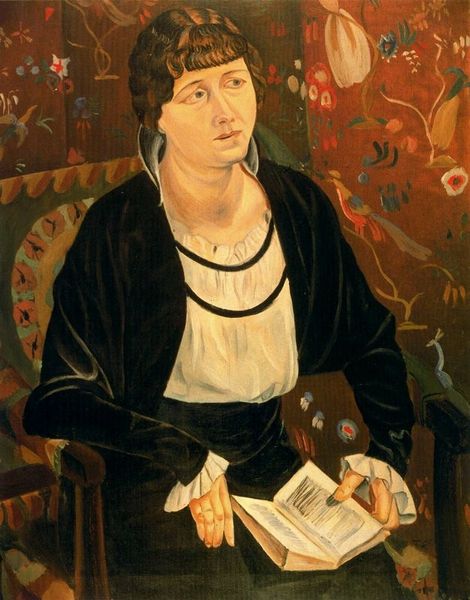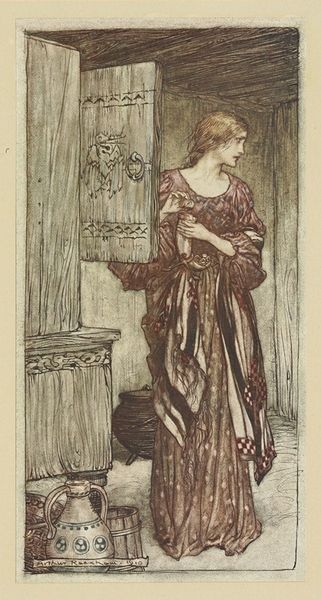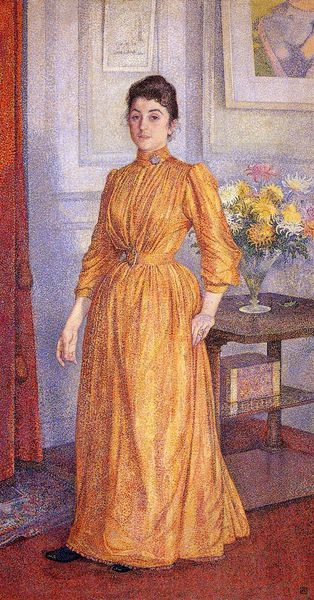
Copyright: Public domain
Curator: Let's delve into Walter Crane's "At Home. A Portrait," created in 1872 with oil paint, and notice the detailed attention that draws us right into the scene. Editor: The quiet domesticity of the subject immediately strikes me; I love how Crane has paid attention to textures throughout the scene, emphasizing a sense of tactile immersion. Curator: Absolutely, but more than texture, what resonates with me is the carefully constructed symbolism reflecting Victorian societal expectations for women within domestic spaces. The woman appears almost imprisoned in this interior haven, a reflection of her prescribed role. Editor: Interesting perspective! I appreciate the materiality of the objects around her. Note the ceramic tiles lining the fireplace, or the plant-filled porcelain vase - these speak to an active market in domestic luxuries during the late 19th century. Who were the makers and consumers of these objects? How did the artist's relationship to these affect the composition of the image? Curator: That's precisely it. While the opulent materiality speaks volumes about wealth, we must also confront how this wealth implicates systems of labor, race, and power. The model’s clothing too. Where were the fabrics from and under what condition were the garments made? Editor: Agreed, examining these factors expands our understanding of not only Crane's artistic intentions but the historical backdrop. The labor behind all of the items in the scene: her dress, the tile work, and the weaving of that tapestry hanging above... Curator: We see how this intersection of material culture and social history plays out in the subtle cues the artist embeds to either underscore or critique Victorian ideals. The Pre-Raphaelite influence situates the woman, perhaps idealized or romantised, at the same time. It’s like Crane presents two narratives at once! Editor: Absolutely, there’s more than first meets the eye! I’m now especially curious about the physical act of applying paint to the canvas. I can see so many stories buried within these domestic luxuries. Curator: It makes you reconsider what is really visible and valued in a historical view of an intimate "at home" portrait, doesn’t it? Editor: Definitely. Focusing on materials and social context allows us to reframe conversations around gender, consumption, and making.
Comments
No comments
Be the first to comment and join the conversation on the ultimate creative platform.

